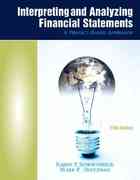Answered step by step
Verified Expert Solution
Question
1 Approved Answer
Harris Corporation: What does the cumulative provision related to the preferred stock mean? The stockholders' meeting for Harris Corporation has been in progress for some
Harris Corporation: What does the cumulative provision related to the preferred stock mean? The stockholders' meeting for Harris Corporation has been in progress for some time. The chief financial officer for Harris is presently reviewing the company's financial statements and is explaining the items that comprise the stockholders' equity section of the balance sheet for the current year. The stockholders' equity section of Harris Corporation at December 31, 2008, is shown on page 590. Harris Corporation Balance Sheet (partial) December 31, 2008 Paid in capital Capital stock Preferred stock, authorized 1,000,000 shares cumulative, $100 par value, $8 per share, 6,000 shares issued and outstanding $ 600,000 Common stock, authorized 5,000,000 shares, $1 par value, 3,000,000 shares issued, and 2,700,000 outstanding 3,000,000 Total capital stock 3,600,000 Additional paid-in capital In excess of par valuepreferred stock $ 50,000 In excess of par valuecommon stock 25,000,000 Total additional paid-in capital 25,050,000 Total paid-in capital 28,650,000 Retained earnings 900,000 Total paid-in capital and retained earnings 29,550,000 Less: Common treasury stock (300,000 shares) 9,300,000 Total stockholders' equity $20,250,000 At the meeting, stockholders have raised a number of questions regarding the stockholders' equity section. Instructions With the class divided into groups, answer the following questions as if you were the chief financial officer for Harris Corporation. (a) What does the cumulative provision related to the preferred stock mean? (b) I thought the common stock was presently selling at $29.75, but the company has the stock stated at $1 per share. How can that be? (c) Why is the company buying back its common stock? Furthermore, the treasury stock has a debit balance because it is subtracted from stockholders' equity. Why is treasury stock not reported as an asset if it has a debit balance? (d) Why is it necessary to show additional paid-in capital? Why not just show common stock at the total amount paid in
Step by Step Solution
There are 3 Steps involved in it
Step: 1

Get Instant Access to Expert-Tailored Solutions
See step-by-step solutions with expert insights and AI powered tools for academic success
Step: 2

Step: 3

Ace Your Homework with AI
Get the answers you need in no time with our AI-driven, step-by-step assistance
Get Started


